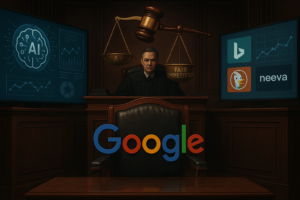Navigating the AI Frontier: The Animation Guild’s Stand Against Major Studio
The Impact on Jobs
One of the most pressing concerns is the potential displacement of traditional roles within animation studios. Historically, animators, storyboard artists, and other skilled professionals have been integral to bringing stories to life. However, advancements in AI are beginning to automate tasks that were once exclusively performed by humans.
For instance, AI tools are now capable of generating animations, automating lip-syncing, and even producing entire scenes with minimal human intervention. While these tools promise greater efficiency and cost savings, they also raise fears of job redundancy. According to a recent survey conducted by the Animation Guild, over 60% of members expressed concerns about AI replacing entry-level positions—the stepping stones for budding animators to gain experience and hone their craft.
The guild emphasizes the importance of ensuring that technology complements human labor rather than replaces it. They are advocating for policies that prioritize upskilling programs, enabling animators to work alongside AI tools effectively.
The Transformation of Creative Processes
AI’s capabilities are not limited to efficiency; they also extend into the creative domain. Tools powered by machine learning can generate story concepts, design characters, and even compose music. While these advancements open exciting new possibilities, they also risk diminishing the human touch that makes animation a uniquely expressive medium.
For example, many animators fear that AI-generated designs may lack the nuance, cultural context, and emotional depth that human artists bring to their work. There is also concern that reliance on AI could lead to homogenized content, as algorithms might prioritize patterns and trends over originality.
However, proponents argue that AI can serve as a collaborator rather than a competitor. By handling repetitive tasks, AI allows creators to focus on higher-level storytelling and artistic innovation. The key lies in finding a balance where human ingenuity and machine efficiency coexist.
Ethical Considerations
The integration of AI into animation raises broader ethical questions that extend beyond jobs and creativity. One significant concern is the potential misuse of AI-generated content, such as deepfake animations or unauthorized recreations of characters and styles. Without clear guidelines, these technologies could lead to legal disputes and ethical dilemmas.
Additionally, there is the question of authorship. Who owns the rights to a piece of art created with substantial AI assistance—the human artist, the studio, or the developers of the AI tool? The lack of consensus on this issue could create friction between stakeholders.
The Animation Guild has called for the development of comprehensive policies to address these challenges. They advocate for:
- Transparency: Studios should disclose the extent to which AI is used in production.
- Accountability: Establishing clear protocols for AI-generated content to prevent misuse.
- Fair Compensation: Ensuring that creators are adequately rewarded for their contributions, even when AI is involved.
The Animation Guild’s Role
Amidst these concerns, the Animation Guild has positioned itself as a staunch advocate for its members and the broader animation community. By engaging with industry leaders, policymakers, and technologists, the guild aims to shape a future where AI enhances rather than diminishes the art form.
Key initiatives include:
- Workshops and Training Programs: Equipping animators with the skills to integrate AI tools into their workflow.
- Research and Advocacy: Collaborating with experts to study AI’s long-term impact on the industry.
- Policy Recommendations: Lobbying for regulations that protect creative jobs and uphold ethical standards.
Looking Ahead
As AI continues to advance, its role in animation will undoubtedly grow. The challenge lies in harnessing its potential while preserving the essence of animation as a human-driven art form. The Animation Guild’s proactive efforts underscore the importance of addressing these issues head-on, ensuring that the industry evolves responsibly.
By fostering dialogue and advocating for thoughtful policies, the guild is helping to navigate the complex intersection of technology and creativity. In doing so, they are not only protecting jobs but also safeguarding the soul of animation—a medium that has long captivated audiences with its blend of artistry and imagination.


